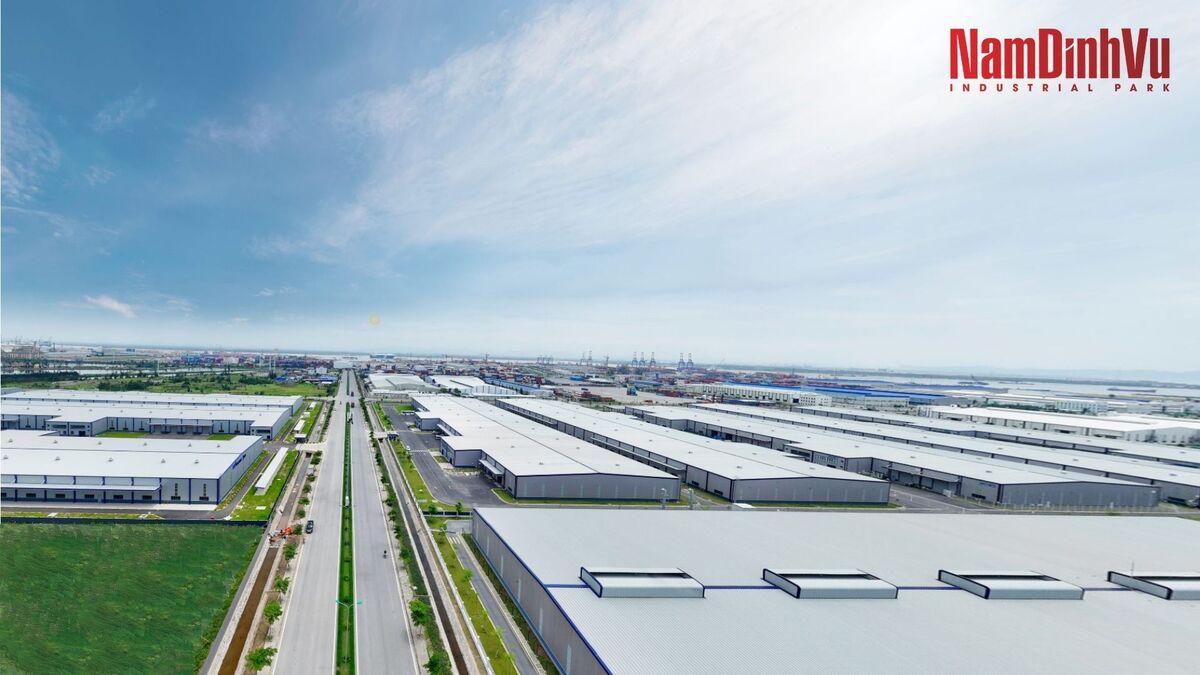Industrial Park in Northern Vietnam
Northern Vietnam continues to affirm its position as one of the country’s key industrial hubs, attracting strong investor interest and maintaining steady expansion despite global economic uncertainties. In the first nine months of 2025, the region’s industrial parks demonstrated remarkable growth in both supply and investment, driven by favorable infrastructure and consistent foreign capital inflows.
Steady Industrial Growth Supported by Strong FDI Inflows
During the first nine months of 2025, industrial parks in Northern Vietnam continued to demonstrate robust growth, with ready-built warehouse supply reaching over 0.8 million m² and projected to surpass 1 million m² by year-end. This milestone reflects the increasing investor appetite for ready-built facilities, which offer flexibility and quicker operational timelines for tenants.
Data from the General Statistics Office revealed a strong flow of foreign direct investment (FDI), totaling US$28.54 billion in registered capital (up 15.2% year-on-year) and US$18.8 billion in disbursed capital (up 8.5% year-on-year). These are the highest figures in the past five years, reinforcing the region’s industrial expansion and contributing to the stability of Vietnam’s broader industrial real estate market.
Beyond the impressive numbers, this also signifies the confidence of global investors in Vietnam’s long-term potential. Favorable economic conditions, stable political climate, and proactive government support have helped Northern Vietnam remain resilient amid shifting global supply chains.
Positive Market Indicators and Rental Dynamics
According to CBRE’s Q3 2025 report, industrial land absorption across Tier-1 provinces and cities in the North reached nearly 350 hectares, with more than half completed in Q1 — before the announcement of U.S. tariff policy changes affecting several countries, including Vietnam. This early momentum underscores how proactive investors have become in seizing opportunities before external uncertainties arise.
By the end of Q3 2025, industrial parks achieved an occupancy rate of 78.1%, a slight 1.5 percentage point decline from last year. Meanwhile, average land rental prices climbed to US$142/m²/lease term, marking a 4.1% year-on-year and 2.3% quarter-on-quarter increase.
CBRE noted that this growth was largely driven by newly launched industrial parks in Hai Phong with higher rental rates, while most existing parks maintained steady pricing to sustain competitiveness amid moderate demand.

Overall, the market remains in a healthy balance between supply and demand. Investors continue to focus on strategic locations with strong connectivity, while developers prioritize sustainable growth and infrastructure quality to meet evolving tenant expectations.
Surge in Ready-Built Facilities and Future Outlook
The ready-built warehouse and factory segment also recorded significant expansion. Over 0.8 million m² of new supply entered the market in the first nine months — already exceeding the total new supply for 2024. The total for 2025 is forecast to surpass 1 million m², the highest level since the segment’s establishment in the region.
This surge shows the market’s adaptability to changing manufacturing trends, where speed, scalability, and flexibility are increasingly prioritized. Developers are also focusing on energy-efficient designs and modern facilities to align with global sustainability goals.
Despite the rapid increase in supply, occupancy rates remained resilient: 79.3% for warehouses (down 4.7 points) and 88.4% for factories (down 2.2 points). Net absorption rose sharply by 36.4% year-on-year, reaching 0.6 million m². Rental prices averaged US$4.9/m²/month for warehouses and US$5.0/m²/month for factories, up 6.4% and 2.5% respectively. The main tenants were electronics and sporting goods manufacturers, alongside a strong presence from logistics firms.
According to CBRE, this indicates a stable and diversified tenant base that contributes to long-term market sustainability. Many international investors view Northern Vietnam as a key alternative hub within Asia, supported by its proximity to China and improving transport infrastructure.
CBRE emphasized that while global economic uncertainty and potential U.S. tariff shifts may encourage investors to proceed with caution, ready-built industrial facilities remain appealing for their flexibility and cost efficiency. In the long run, hybrid and multi-story warehouse models are expected to become more widespread, optimizing land use as space around Hanoi grows increasingly limited.
In conclusion, Northern Vietnam’s industrial parks have sustained their upward trajectory throughout the first nine months of 2025, supported by solid FDI inflows and expanding warehouse capacity. With evolving investor demand and innovative development models, the region remains a key growth engine for Vietnam’s industrial real estate landscape.
Source: Reatimes
